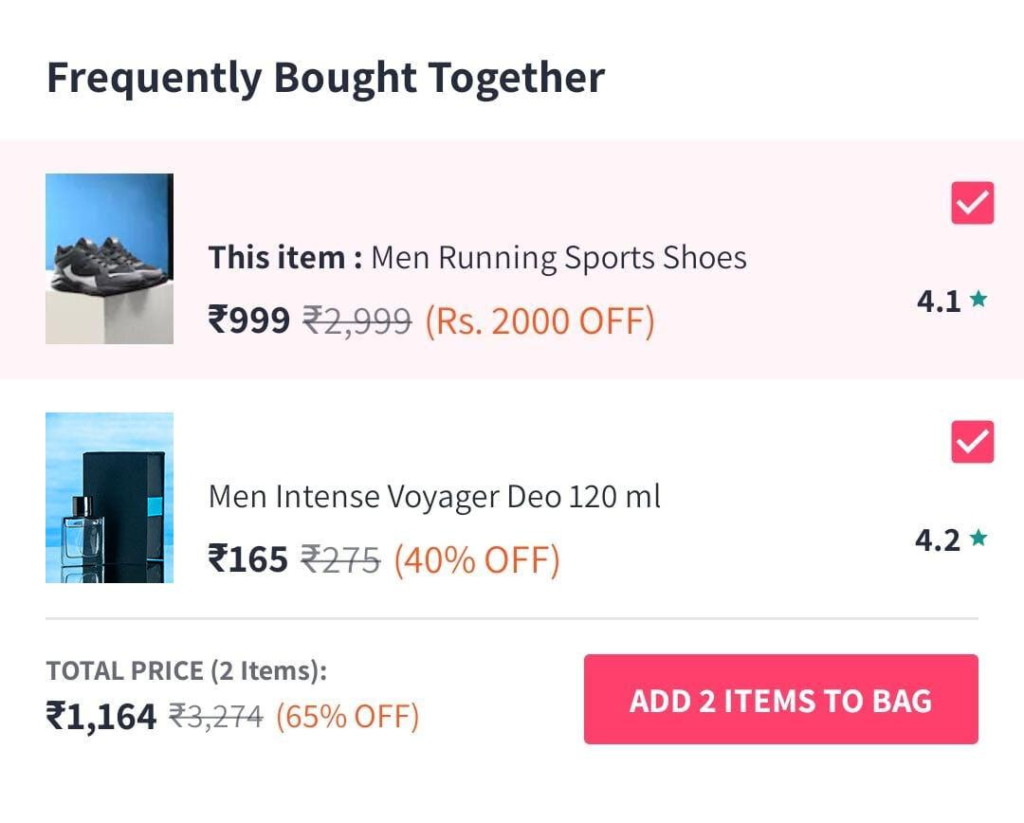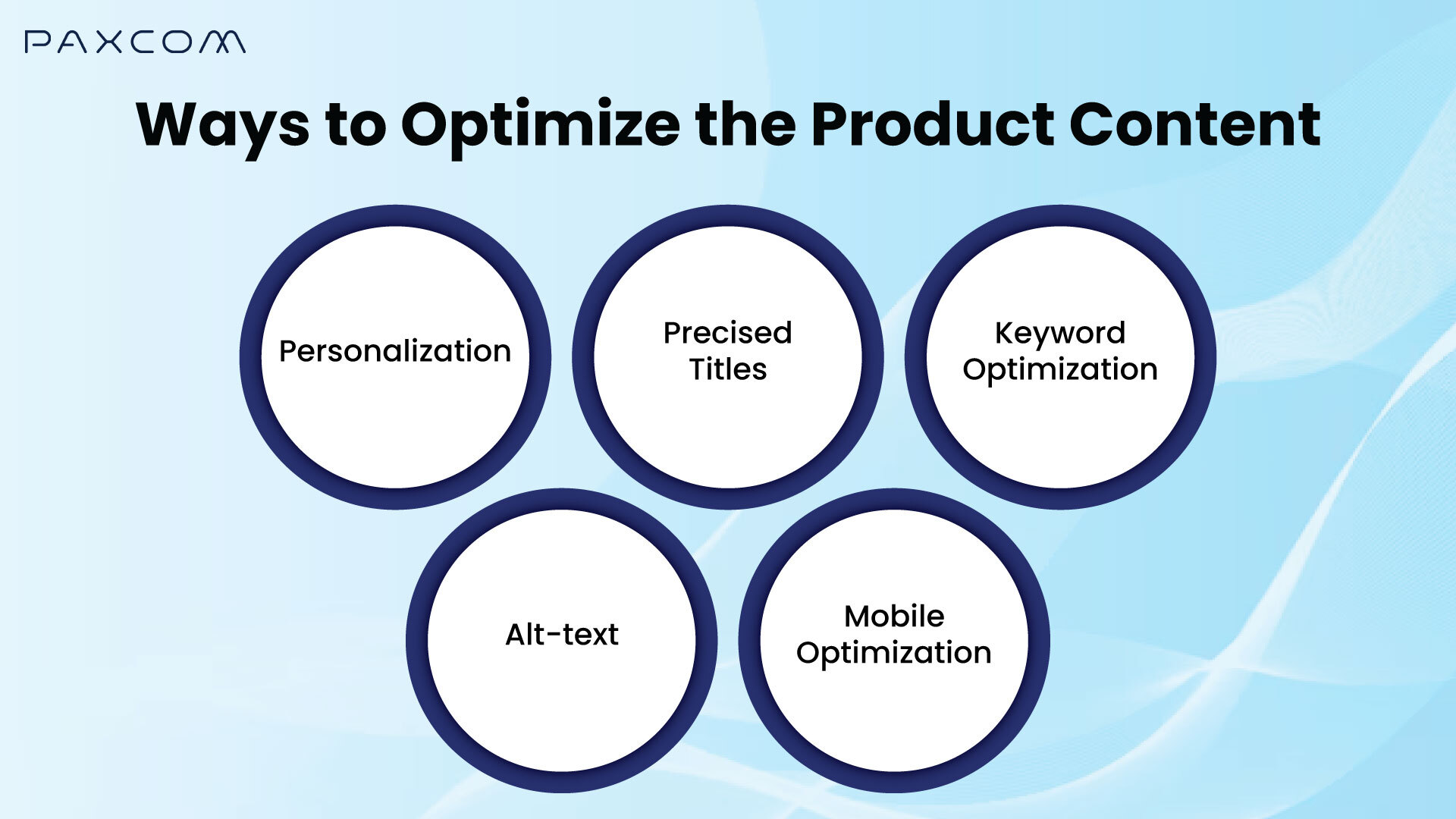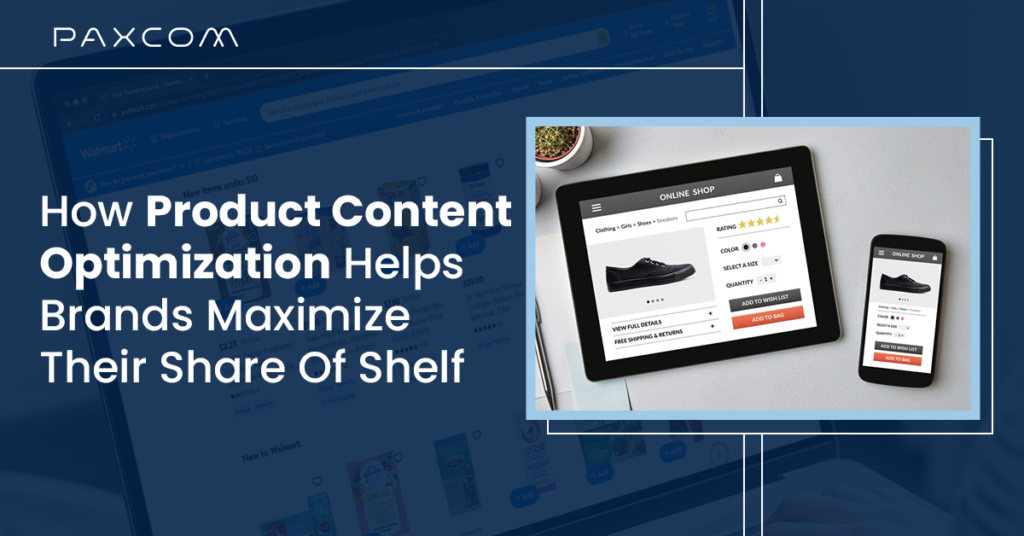Table of Contents
Introduction
Are you facing issues with the listed products? Are you not reaching the expected conversion rate? Are you unaware of whether the product content is optimized? Is the product or brand visible on the first page? Is the content effective enough to drive conversions? Did you know that even low-quality images can turn customers off and divert them away from the product? Premium images enhance the look and feel of the product. Weebly reports that approximately 75% of consumers rely on product images when purchasing.
Seeking consumer attention is key, but strategizing is important to gain a competitive advantage. This blog focuses on how optimizing product content helps brands maximize their reach and shelf share. Discover the best practices and how Paxcom can help drive conversions and make you get the most out of a brand’s potential.
The effectiveness of product content optimization and brand visibility cannot be overstated in this highly competitive eCommerce landscape. Brands frequently strive for increased discoverability and higher visibility of their listed products to drive conversions. Consumers have become increasingly impatient, often limiting their search to the first page or two results when seeking a specific product. Consequently, ensuring that your product claims a prominent position on the metaphorical “top shelf” from the outset is crucial. This is precisely where content optimization steps in, serving as a vital tool for achieving maximum brand visibility and capturing the attention of potential customers. By refining and optimizing product content, brands can significantly enhance their chances of standing out and attracting the interest necessary for successful conversions.
But before we move forward, let’s get into the details. Distinguished elements are optimized to tap a larger audience. This process involves adding high-volume keywords, meta tags, relevant descriptions, cross-platform marketing, and related best SEO practices. It helps retailers scale their business online and align their products better with unique trends.
Product Content Optimization

Product Content Optimization
As an eCommerce brand, optimizing product content is crucial for enhancing product visibility and boosting search engine rankings and click-through rates. Key elements such as descriptions, structured data, user reviews, ratings, and localization and personalization factors must be optimized. Content optimization, alongside high-resolution images and reviews, significantly influences customer buying decisions and helps brands effectively communicate their message to their audience.
Benefits of Product Content Optimization
- Brand and Product Visibility
The first and foremost benefit of optimizing content is the increased visibility of the products on the shelf. Relevant keywords make the product discoverable and impact its organic search rankings across the marketplace and the search engines. Implementing accurate product titles and detailed descriptions makes the product and brand more discoverable, resulting in increased chances of conversion.
Optimization techniques and persuasive language highlighting key features and addressing customer pain points may significantly influence buying decisions.
- Relevance Building
Optimization plays a significant role in determining the brand’s relevance by effectively communicating the brand’s value proposition, connecting with target audiences, and establishing a consistent and engaging brand experience. By tailoring their content to specific audiences and addressing their needs, brands foster a sense of relevance and understanding. Incorporating customer feedback and maintaining omnichannel consistency enhance brand relevance.
- Enriched Product Display Pages

Source: Amazon
Content is immaculate, and staying aligned with ongoing and forthcoming trends is essential. Along with A+ content, it is also important to maintain the product display pages to gain an edge over the competition.
The number of ROPO (Research Online Purchase Offline) consumers will increase, and retailers worldwide will recognize them. Engaging them with rich product content ensures brand recall, a positive shopping experience, and the elimination of the need to search for alternative products.
People want to ensure that brands are in sync with the product experience, both online and offline. Especially in the leisure & lifestyle category, the look & feel of the product matter. Customers are more likely to purchase the product when they have customer-friendly policies. With the growing ROPO effect, traditional eCommerce sales are further expected to grow as they fulfill the parameters of splendid service and a personalized experience.
Thus, an enriched product display page with precise titles, features, and descriptions will elevate the brand’s presence and product visibility across the marketplace and influence the customer decision-making process.
To accommodate these customers and others, it is essential to replicate the experience of comparing products in physical locations. E-commerce platforms must evolve.
-
- Brand Uniformity
Yet another significant impact of content optimization is that it maintains the uniformity of the brand throughout. Aligned product descriptions, specified text fonts, and a consistent color palette per the brand’s identity help easily position the customers while leaving a coherent message in the audience’s minds. Brands that invest in compelling and persuasive descriptions accommodated with the right keywords a user might be looking for can differentiate themselves from competitors and capture shoppers’ attention. Maintaining consistency during product listing, packaging, and marketing fosters trust and brand loyalty.
Nielsen’s report stated that 76% of buyers prefer to have enhanced product content while making an online purchase.
-
- Bundles are the New Normal

An example of Cross-Selling
eCommerce brands with a wide catalog implement this strategy across marketplaces.
One thing about customers is that they never buy just one product and call it a day. Be it a brick-and-mortar store or an online marketplace; they look for lucrative deals, promotions and discounts. This is where having comprehensive catalogs comes into the picture.
In the same way, platforms often recommend or bundle other products to add to the cart. For example, a fashion brand could maximize its PDP to the point that it would recommend accessories with the dress as add-ons.When product attributes are accurately tagged, recommendations can be made efficiently and effectively, improving the customer experience.
In summary, through the strategic optimization of product content, brands can greatly enhance brand visibility, effectively engage consumers, and maximize their potential for converting casual browsers into loyal buyers. It allows brands to present their products in the best possible light, differentiating themselves from competitors and maximizing their share of the shelf both online and in physical stores. Additionally, bundling products boosts sales by offering customers added value and convenience, encouraging higher purchase volumes. This comprehensive approach builds a rock-solid brand identity and paves the way for long-term success.
Moving ahead, the blog sheds light on basic listing requirements across platforms to help you gain better.
Listing and Product Content Optimization across top platforms
Requirements & compliance policies matter from platform to platform. But below are some must-have standard requirements to help you get the most out of it.
Getting Started with Top eCommerce Platforms
-
- Create a Seller Account on the respective platform
-
- Product titles should be precise and have relevant keywords.
-
- Four to Eight bullet points highlighting the product’s features and relevancy
-
- Detailed descriptions highlight the key benefits of the product.
-
- Supporting images alongside high-resolution images must be included for a comprehensive view.
-
- Define categories & sub-categories clearly, along with product specifications.
Complying with the respective platforms’ policies ensures effective listings and visibility across marketplaces, resulting in increased conversions and customer engagement.
Ways to reap the benefits of Product Content Optimization
The term sounds fancy, but it’s more complicated than it seems. Listed below are a few ways to implement them while optimising product content.

Ways to optimize the product content
-
- Personalization: Research for keywords that make sense to your audience, suggest options on your page, give them alternatives, and make the experience worthwhile. Retail Next revealed 40% of consumers prefer a personalised shopping experience, while Forrester stated over 48% of marketers have provided or expect to provide an elevated customer experience through conversation intelligence.
-
- Compelling Titles: It is important to create accurate titles per the search requirements and be equipped with the necessary information.
-
- Meta-tagging: A simple description containing keywords and copyright information. It helps the search engine identify the product on the web page. Search engines frequently generate the summary on the results page using the title and distribution meta tags.
-
- Back-end Keyword Optimization: Like meta-tagging, eCommerce platforms allow keyword indexing on product pages and add relevant backend keywords to images and videos, wherever possible.
-
- Long-tail keywords: They allow you to target a specific niche as they are drafted to cater to queries. For example, product content optimization is beneficial for eCommerce brands. Here, our keyword is “product content optimization”.
-
- Alt text: Text is written to describe what the image is about and give the audience better clarification. Alt texts frequently increase the likelihood of a Google crawl and also help with website ranking.
-
- Optimizing for mobile: Professional-quality images in the correct sizes that fit best for mobile viewing. Salsify reports that 77% of shoppers prefer mobile devices to search for products.
Optimize your Brand’s performance with Paxcom
There are millions of products to choose from, and as a brand, you have to make sure that your customers choose your product by making it reach out to the right audience. This is where Paxcom comes into the picture. Meticulous content audits examine your existing product content and identify areas for improvement. Whether it’s optimizing product descriptions, enhancing keyword usage, or improving overall content quality, we leave no stone unturned in our pursuit of content excellence. We are committed to accelerating your business’ growth and delivering tangible results that drive conversions and boost your brand’s share of the virtual shelf.
Explore how Paxcom helped a brand in the health and beauty category achieve 71% growth in conversion on Amazon. As a result, the brand recorded a whopping increase of 224% in revenue with an 81% CTR.














